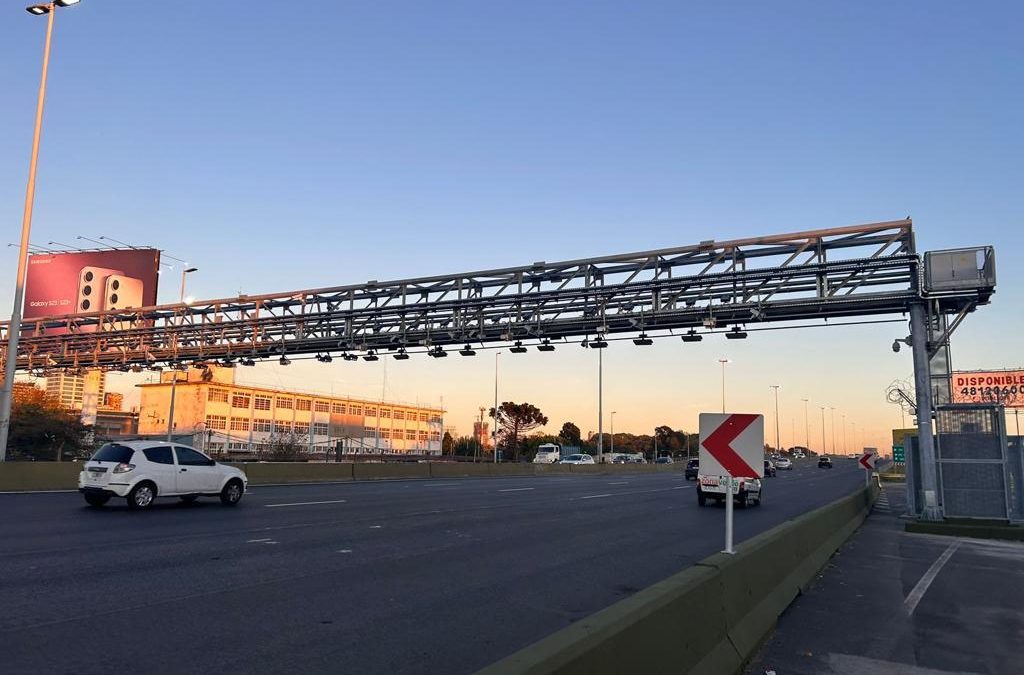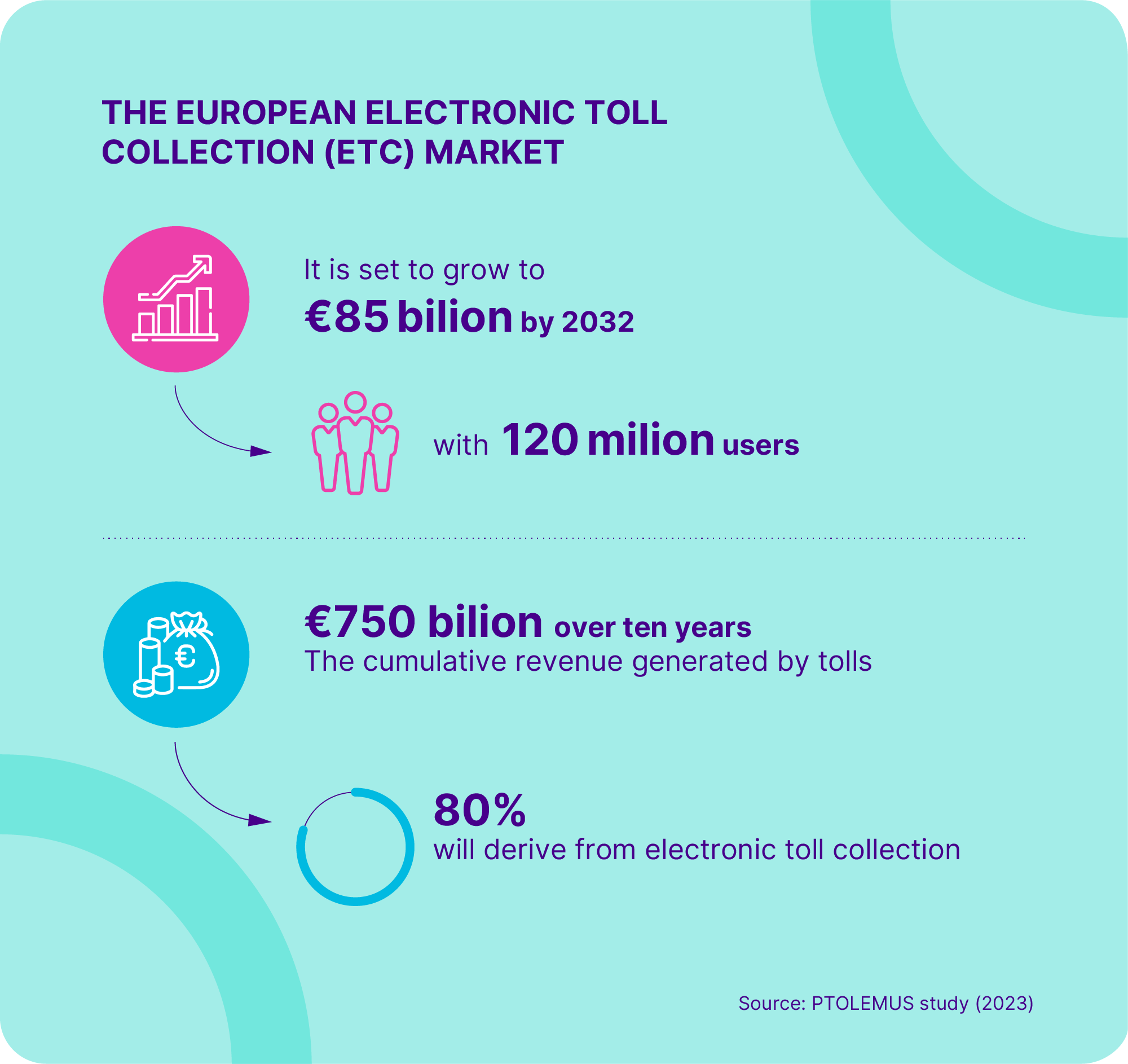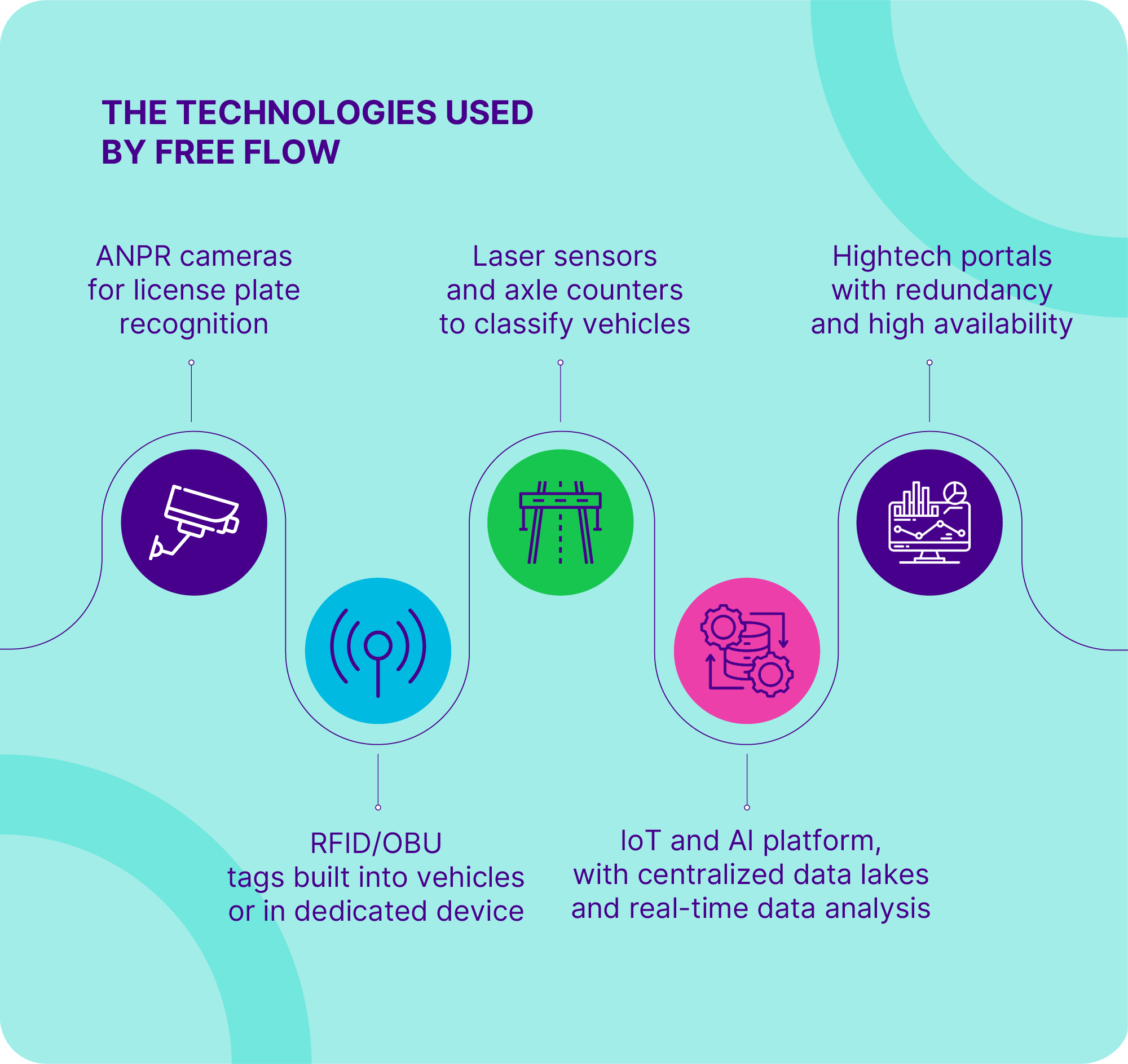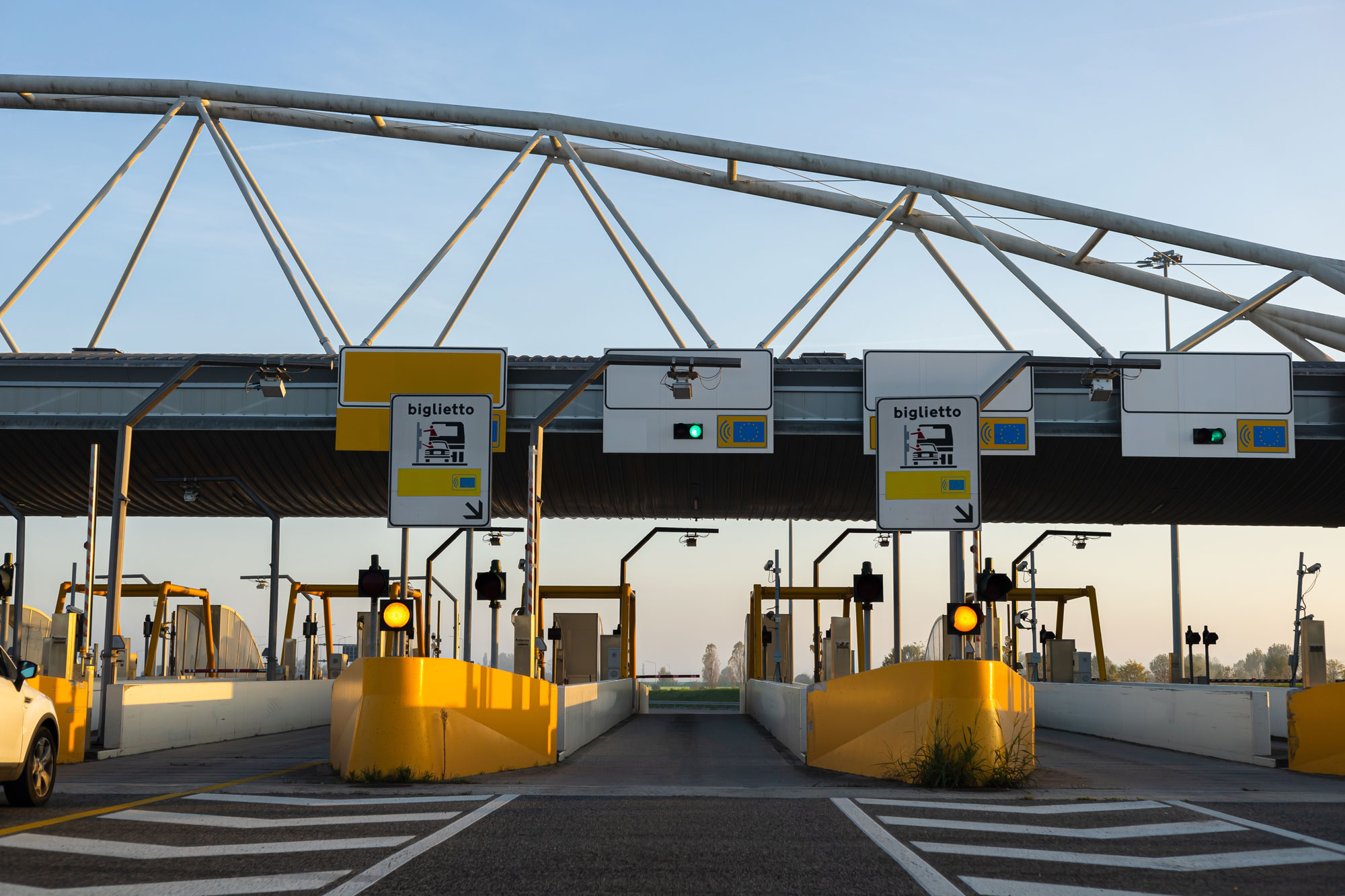
TREND > SMART MOBILITY
Free Flow System. Tolling gets smart.
Highway tolling systems are becoming increasingly “smart”, automated and digital. Integrating innovative technologies – such as advanced payment platforms or automatic license plate recognition – promises to make our journeys safer, smoother and more sustainable.

Automated tolling technology is advancing by leaps and bounds, implementing increasingly sophisticated devices that exploit the latest digital innovations. It is a research field that is fully part of the broader concept of “Intelligent Transport Systems (ITS)”, which involves developing increasingly “smart” and connected road infrastructures.
Free Flow systems
The smart road concept means using infrastructures built with advanced technologies, such as IoT sensors and data analysis platforms. The aim is to improve safety, optimize traffic and reduce environmental impact.
This scenario includes “Free Flow” tolling, a solution that can overcome the logic of traditional toll booths. Sophisticated automated features allow this system to optimize traffic flow on the highway network.
How it works
The Free Flow and Multi Lane Free Flow systems consist of portals equipped with cameras to read vehicle license plates and devices to detect and classify passing vehicles. The toll is calculated in real time and then sent to the management platform. Their operation is based on real-time data processing combined with the activity of the sensors, with large amounts of information collected in just a few moments.
Dedicated software correlates the events detected, attributes them to the vehicles, and sends the data to the platform, which calculates the toll automatically. This system allows travelers to pay with the utmost accuracy without slowing down, while digital devices collect transit information, which can be used to create advanced reports.
Payment can be made using various methods (apps, internet banking, assistance points, etc.), thus meeting drivers’ differing needs.

In Italy and the rest of the world
In addition to Italy – where it is used on various highways and ring roads – several countries in Europe and around the world have adopted the Free Flow system. In France, for example, the service on the A13 and A14 highways near Paris will be extended in 2025 (Source: Fleetmagazine). In Portugal, Free Flow is very widespread and accessible and often integrates with the more traditional tolling system (Source: hogslive). This solution is applied in Norway, where it is also used for ferries (Source: visitnorway)
Leaving Europe, this technology is becoming established in Argentina: in 2023, for example, a new Free Flow tolling system was inaugurated on the Illia highway in the City of Buenos Aires. But there have also been recent trials in Brazil (Source: gov.br).
The benefits of Free Flow
There are several benefits to installing tolling systems without toll booths on highways. In fact, eliminating “forced” stops prevents queues from forming, which improves traffic flow and travel times.
Automated payments also reduce accidents by eliminating the risks of sudden braking and lane changes near toll booths.
Decreasing stops and optimizing routes reduces fuel consumption – and related CO2 emissions – for which the environment is grateful. Moreover, ridding highways of toll booths brings great savings in infrastructure costs, while also reducing maintenance costs.
Finally, Free Flow systems can be supplemented with data collection technologies, which can be used for traffic flow management, but also to analyze emissions and other environmental information, with further green benefits.
The challenges of smarter tolling
Despite the many benefits, there are still a few things to bear in mind. In particular, the system must be capable of detecting license plates even in difficult conditions, such as in bad weather or at nighttime, and must also be able to accurately distinguish the different vehicle types traveling on the highway section. This means that detection accuracy levels are critical.
This solution must also be integrated with other technologies in order to make the most of the synergies and increase the functionality of existing systems.
Finally, the issue of security and data protection has to be considered, since sensitive information is detected, such as vehicle license plates and locations.
These aspects must be taken into account when choosing a technological partner to be entrusted with implementing a Free Flow system, a solution intended to make road infrastructure more efficient, ecological and modern.

Tolling
Toll payment becomes smart Our technology is deployed on 75% of the roads in Italy and within 20 million on-board devices for dynamic toll collection across Europe, handling over 1 billion transactions annually. We offer smart and innovative solutions for a more comprehensive and transparent toll information management, delivering a straightforward and easily understandable payment […]